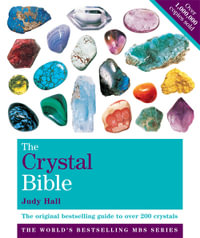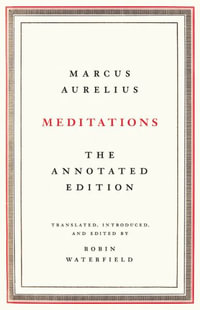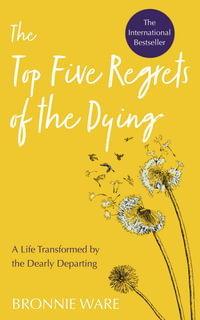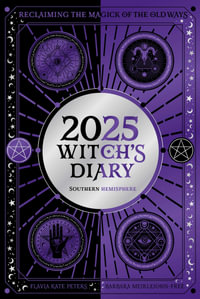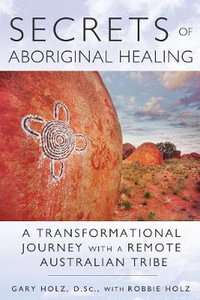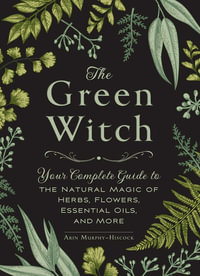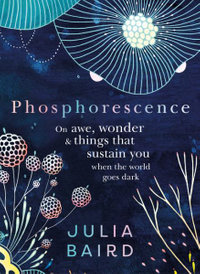Bede Griffiths - English Benedictine monk and lifelong friend of C. S. Lewis who was his tutor at Oxford - wrote in 1955 to a friend: 'I'm going out to India to seek the other half of my soul'. There he explored the intersection of Hinduism and Christianity and was a driving force behind the growth of inter-spiritual awareness so common today yet almost unheard of half a century ago. Wayne Teasdale a long-time personal friend and student of Griffiths provides readers with an intriguing view into the thoughts beliefs and life of this champion of inter-religious acceptance and harmony. This volume is the first in-depth study of Bede Griffiths' contemplative experience and thought. Fully exploring the antecedents and development of Griffiths' theory that the Christian mystery can be expressed through the worldview of Hinduism, BEDE GRIFFITHS is a vital starting point for any spiritual seeker who wants to understand the shared territories of these two great faiths.
Industry Reviews
Originally Teasdale's 1985 doctoral dissertation published two years later in India, this introduction to the work and thought of Fr. Bede Griffiths has been reissued in the United States with minimal editing but with an epilogue, newly detailed notes and an expanded bibliography. A student and personal friend of Bede, Teasdale includes in these additions insight from taped conversations and lectures as well as other sources dating from 1985 to Bede's death in 1993. The author offers the current publication as his contribution toward a greater understanding of the English Benedictine and the growing movement of interspirituality, "the activity and process of exploring other traditions in more than an academic sense." As a slightly revised dissertation, this volume does not offer casual reading. But it does present a rewarding introduction to, and perhaps summary of, Bede Griffiths' quest to discover intersections of Hindu and Christian theology and spirituality so as to create an authentic Indian Christianity.
After Bede's 1986 foreword and his own preface, Teasdale divides the book into two major parts: historical context, including Bede's "method" of mystical or contemplative theology, and theological scheme, focusing on the central issue of parallels between Saccidananda and Trinity. This second section also includes Bede's interspiritual insights on Christology, "monkhood" in both religious traditions, and the future of the Church, as well as the author's original conclusions and several implications of Bede's interspirituality. Teasdale concludes the book with an epilogue, a brief glossary of Hindu terms and a seventeen-page bibliography of works by and about Bede Griffiths, who was also known as Dayananda, "Bliss or Joy of Compassion." Readers unfamiliar with Hinduism will find themselves consulting the glossary often, and serious students of Hindu/Christian interspirituality will delight in searching the rich collection of articles, books and theses.
Teasdale places the English monk in a movement begun in the seventeenth century, with particular attention to the work of two of his more immediate predecessors, Jules Monchanin and Henri le Saux (Abhishiktananda). These men were, in turn, taking up a task articulated by theologian Henri de Lubac: "rethinking everything" in light of theology and rethinking theology in light of mysticism. Bede made this work his lifelong effort, seeking a new synthesis of Eastern and Western mysticism and Christian faith. The author emphasizes that Bede's way of knowing included comparative study and reflection but functioned most fundamentally in symbolic and intuitive modes, grounded in contemplative experience.
According to Teasdale, Bede's interspirituality cannot be dismissed as mere syncretism. What the monk envisioned as a convergence of Hindu and Christian doctrine and practice presupposes a unity behind religious and cultural experience, that unity being Ultimate Reality. Hindu and Christian alike experience and therefore understand the Divine as at once transcendent and immanent, known both in the cosmos and in the "cave of the heart." What is experienced in contemplation is One Truth, but this experience finds expression in various symbolic modes in different religions.
In Bede's interspiritual thought, both Christian monasticism and its Hindu counterpart (sannyasa) seek, through ascetical and contemplative life, the experience of non-duality (advaita), unity of the self with Ultimate Reality. Differing symbols for this single Reality are Saccidananda and Trinity, and it is here that Bede identifies the central point of convergence and possibility of a true meeting between Hindu and Christian. The author judges Bede more cautious and prudent than his predecessor Abhishiktananda, who saw an identity of Saccidananda and Trinity. Bede, on the other hand, advocated "theological adaptation and appropriation of Hindu terms" in order to create a truly Indian Christianity. He did not simply interchange Hindu and Christian terms, but in a process similar to early Christian use of logos to interpret the Christ, recast Hindu words and symbols in Christian theological usage, incorporating certain connotations and refinements.
Bede's approach, as well as his theological precision, is evident in his decription of the most accurate way to express advaita, nonduality or unity in distinction, in Christian terms. According to Teasdale, Bede rooted his view of a Christian advaita in the Gospel of John, which he understood to express "the truth of a modified Advaitic experience in Christ's consciousness. . . ." Teasdale quotes Bede:
. . . this man (Jesus) knows Himself in . . . unity with the Father. He can say, "I and the Father are one." And that is the mystery of unity-in- distinction. This is the point that is generally missed. . . . Jesus does not say, "I am the Father." That would be pure advaita, pure identity, but [he] says rather, "I and the Father are one," which is unity-in-distinction. . . . And He also says, "I am in the Father, and the Father is in me." That is the proper way of expressing advaita in Christian terms. (p. 116)
In Teasdale's assessment, Bede's mystical theology seems to begin and end with a need to open ourselves to revelation of one divine unity-in-distinction, which took place in many times and places. Christian at his core, Bede named this Divine Reality love. How completely this single Reality enlivened and guided Bede and his interspirituality becomes poignantly evident in Teasdale's epilogue. The author describes how, even after two strokes had severely debilitated him, the monk continued to speak constantly of love. Teasdale quotes one of Bede's many friends: "It is the one, all encompassing category of his experience."
Teasdale has performed a valuable service for the continuing movement of interspirituality, a work in progress which the author believes is still in infancy. The author's own considerable experience and knowledge of interspirituality in general and Bede Griffiths' work in particular is evident in this work. Those unfamiliar with one or both will find that Teasdale requires close, careful reading and reflection. However, both novice and experienced students of interspirituality will be rewarded by his clear, comprehensive synthesis of Bede's work and thought. Familiar with rational theology and well practiced in Bede's own method of contemplative theology, the author proves adept at analyzing and critiquing Bede's life work and thought. Teasdale does not succumb to unthinking adulation of his friend and mentor, but points out both Bede's accomplishments and unclear or unfinished elements of his work. In fact, there are places in the book where a reader might wish for further detail and development of Bede's insight. But this could simply prove that the author accomplished one of his major goals: to call attention to, and arouse interest in, the life and thought of Bede Griffiths, a " Western prophet shining in the East." -- Marielle Frigge, OSB * The American Benedictine Review *







